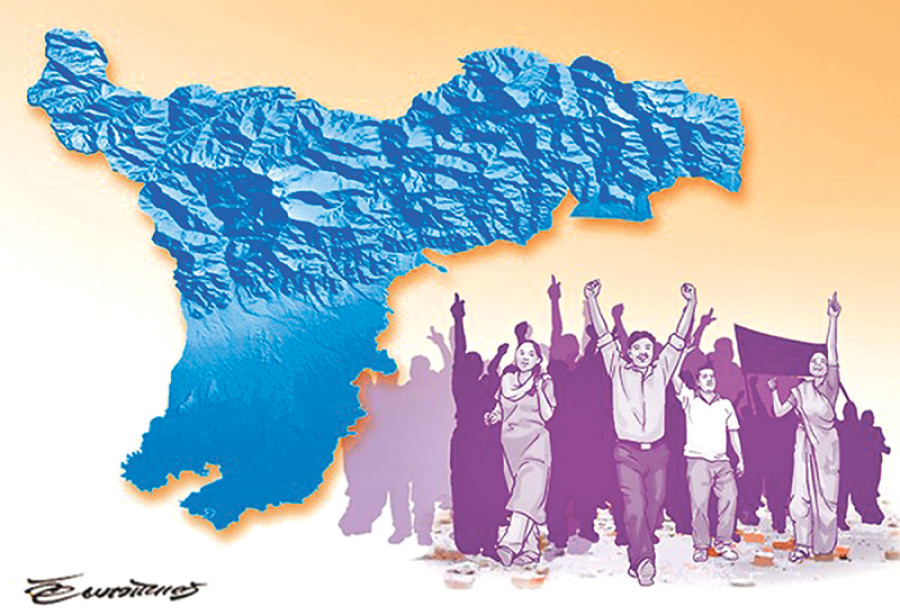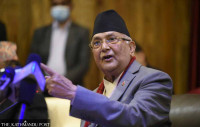Opinion
A case for Gorkhaland
The demand to establish Gorkhaland as a state separate from West Bengal has surfaced once again as a national issue in India. This demand was first put to the British India government in 1907.
Mahendra P Lama
The demand to establish Gorkhaland as a state separate from West Bengal has surfaced once again as a national issue in India. This demand was first put to the British India government in 1907. This region has a political history and socio-cultural background that is different from the complexities of Bengal’s politico-economic structures. This 110 year old demand has seen three phases of intense agitation and violent eruptions during 1970-81, 1985-88 and 2008-2012. It was preceded by the fierce Naxalite movement in 1960s and 1970s originating at the very core of Darjeeling’s foothills. The people of the Darjeeling district and the adjoining Dooars are of the view that their region has very little to do with the state of West Bengal in terms of geographical features, natural resources, socio-cultural patterns and livelihood systems.
The Bengal government may have established the Darjeeling Gorkha Hill Council in 1988 and the Gorkhaland Territorial Administration in 2012, but the people are coming to realise that the government is neither inclined to make substantive development interventions nor correct historical injustices.
Once celebrated as the “Queen of the Hills”, this region today is in a state of ruin. The forest resources, cinchona plantation, tea industry, opulent biodiversity, water resources, rich human resources and traditional institutions have been systematically plundered. The world famous 150 years old Cinchona (quinine) Plantation exported quinine to the tune of IRs71.72 lakh in 1966-67 alone and did so for several decades. Bengal exploited this commodity but left the industry in the lurch when production started decreasing. This smacks of internal colonialism practised from the Writers’ Building in Calcutta.
Five grounds
People and communities regardless of caste, creed, language and religion have suffered from well-planned manipulation and alienation by successive regimes in Bengal. The hunger deaths in tea gardens of the Dooars and massive demographic change in the Darjeeling district is only the tip of the iceberg. The separation of Gorkhaland from West Bengal is viable on five significant grounds.
Firstly, this new state will be the only state in the country to have four international borders with Bangladesh, Bhutan, China and Nepal. Simply undertaking cross-border trade including through land customs at Phulbari, Jaigaon, Jelep la and Pani Tanki/Pashupati on a regulated framework could trigger huge development multipliers. As the regional and global trade scenario becomes more liberal and cross-border connectivity improves, these trade routes are likely to become robust and vibrant in the very near future, thus leading to newer varieties of sub-regional cooperation and integration. These borders will be the core part of cross-border energy exchanges under the Bangladesh, Bhutan, India, Nepal (BBIN) Initiative.
Secondly, this will be the only state where there are two topographical variations, resulting in varying agricultural and social systems. The tea, cinchona, floriculture and horticulture produced in this region can be directly transported to different markets through ports in Bangladesh and the Sittway port in Myanmar. This region constitutes 20 percent of the total land under tea cultivation in India and contributes almost 7 percent of the total world tea production. Historically, this region has been a key source of revenue for India’s foreign exchange basket. The auction centre and tea companies are now located in Kolkata, but it would be more feasible if Siliguri were to be the venue for auction centres instead. Tea from the region, from Assam, and from neighbouring Nepal, could be exported through ports in Bangladesh. India has already reached an agreement with Bangladesh on this.
Thirdly, this entire region has been declared one of the 25 biodiversity hotspots in the world. It is home to Singalila and Mahananda national parks and Sinchel, Neora Valley, Gorumara and Jaldapara water and game sanctuaries. With wildlife corridors, fabulous mountain ranges, bio-diversity and scenic beauty, this region could be a hotspot for eco-tourism. The Sidrapong power house was the first hydropower project in Asia and was built in 1897, and the tea industry has been functioning since the 1860s. If these were to be declared world heritage items, Darjeeling will be the only district with three sites listed in the Unesco’s World Heritage list within such a small geographical location. One site already listed is the Darjeeling Himalayan Railway built in 1881.
If a central university and institutions related to technology, management, industry and information, and resource management are set up, this region could be a major education hub in North East and East India. Schools and colleges in this region have traditionally attracted both national and international patrons for almost 150 years now. Global market linkages between folk medicine produced through cultural practices and utilisation of biodiversity resources could lead to massive revenue and income mobilisations. Ethnic groups within this region have practitioners such as Jhankris, Phedangmas, Dhamis, Bonbos, Pows, Nejums and Bumthings who can produce folk medicine. If their intellectual property is used properly, it could bring in a huge number of licenses and patents. That these practices are steadily vanishing and surreptitiously making their way into Chinese, European and American laboratories and global markets is a great loss.
Fourthly, this is a state where hydropower resources have not been commercially harnessed. There are a number of rivers that flow through this region. The power generated by these rivers could be sold to both Indian and cross-border grids.
And finally, this new state and the Siliguri Corridor will be a gateway into India’s North East. It will also be an instrument to harness the opportunities unleashed by India’s Act East Policy. This route could be used by Bangladesh, Bhutan and Nepal to attract investments and access markets in South East and East Asian countries. India’s Act East policy geographically originates from this region.
Security issues
This separate state will complete the pragmatic definition and geographical configuration of the North East region. If Assam and Sikkim are part of the North East region, then why not this intimately contiguous region? Gorkhaland is the only mountainous area which is not a constituent state of India in the entire Himalayan region that stretches from Arunachal Pradesh to Jammu and Kashmir.
The people have lost faith on the commitment and capability of the West Bengal government to run the affairs of the proposed Gorkhaland. They are perturbed by the vengeance with which the Bengal administration is creating a rift between the people in the hills and the plains. Being a highly strategic geo-political location, this does not augur well for India’s national security complexities and vulnerabilities. A separate statehood is also needed for the security of the Gorkhas, Bengalis, Biharis, Marwaris and tribes such as the Adivashis, Bhutias, Lepchas and Rajbongshis that live in this region.
Lama, the founding vice-chancellor of Central University of Sikkim, served in the steering committee that prepared the North East Region: Vision 2020 for the Indian government




 7.12°C Kathmandu
7.12°C Kathmandu










